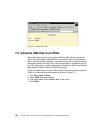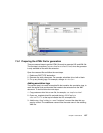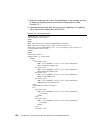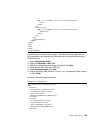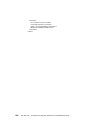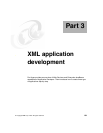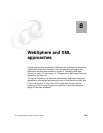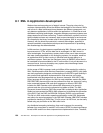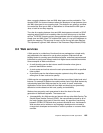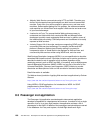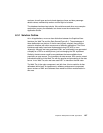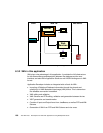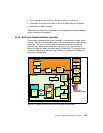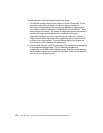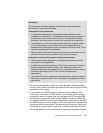164 The XML Files: Development of XML/XSL Applications Using WebSphere Studio
8.1 XML in Application development
Web services are becoming part of today’s Internet. They play a key role for
maximum interoperability across the different technologies on the Internet. XML’s
role is that of a data interchange format between the different components, not
only between applications, but also within the applications. In Client/Server and
distributed computing technologies, integration between proprietary systems was
always expensive and time-consuming. To derive efficiencies, systems had to be
tightly coupled and were not necessary kept to open-standards as we have now.
As compared to the binary formats used in those systems, XML is very verbose.
However, with the latest improvements in network technologies, especially in
network bandwidth, compression techniques and improvements in processing,
this disadvantage has been absolved.
In Web services, the data types are specified using XML Schema, which are an
improvements on DTDs, and the data that is exchanged is in XML format. In
other technologies, the proprietary systems had to make use of data structures
that were closely dependent on the underlying systems. An example, would be
an applications with its client running in Windows and the data being on a
mainframe systems. Data from the mainframe, being in EMBDIC format had to
be translated to formats suitable for the PC environment. If only, all data were in a
common format, that was shared by every system, data interchange issues
would have taken less of a priority.
As the usage of XML increases, tools and utilities will be required for authoring
XML, Schemas and the Web Services Description Language (WSDL). with these
new tools, application designers and developers will use XSD to gain flexibility in
their product and application implementations. Web services can now be
implemented using languages such as Java and Javascript. With XSLT, XML
Query language and the support for XML by major database vendors like IBM’s
DB2 UDB, XML documents are can be processed as they are, instead of having
to be converted between XML and other languages or formats. DB2 UDB
includes the XML Extender, which allows XML documents to be stored in
columns and also to be store the elements into tables as fields. The XML
Document Access Definition (DAD) files maps XML to relational data. Application
Studio has incorporated the RDB to XML mapper tool to facilitates the generation
of the DAD. From the DAD, the DB2 XML Extender (DADX) can be produced.
This file is in XML and contains operations defined by normal SQL statements
and calls to the stored procedures in the DB2 XML Extender. IBM SOAP includes
provides the handling of DADX files. This file, since it is ASCII text, can be easily
edited using any text editor or the XML editor tools.
Any distributed computing technology, they must be support for converting
between from one system to another. In the case of SOAP, the data interchange
format is XML and the run-time components are implemented in Java. Therefore,



